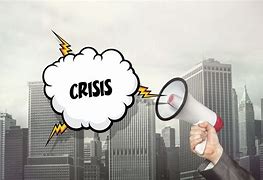Responses to Covid-19
The COVID-19 pandemic has reshaped our lives in profound ways, sparking debates and discussions about public health, government responses, and individual responsibilities. However, interpretations of the pandemic and its impact vary widely across different news outlets and sources of information.
Some news outlets emphasize the importance of public health measures such as mask-wearing, social distancing, and vaccination as crucial tools in controlling the spread of COVID-19. They may feature expert opinions from healthcare professionals, epidemiologists, and public health officials who advocate for strict adherence to guidelines recommended by organizations like the Centers for Disease Control and Prevention (CDC) and the World Health Organization (WHO). Examples of such coverage can be found in publications like The New York Times' health section, which provides comprehensive coverage of COVID-19 developments, including updates on vaccines, variants, and public health policies.
The Covid-19 Pandemic - The New York Times (nytimes.com)
Other media sources might examine how the government handled the pandemic, pointing out its achievements, shortcomings, and room for development. To evaluate the efficacy of initiatives put into place at the local, national, and worldwide levels, they might include data analysis, in-depth interviews with experts, and investigative reports. Publications like the Washington Post Politics and Opinions Section, which provides in-depth analysis and commentary on governmental policies, political discussions, and public opinion surrounding COVID-19, are good examples of this type of coverage.
News outlets also differ in their coverage of the economic impact of COVID-19, with some focusing on the devastating effects of lockdowns, business closures, and job losses on individuals and communities. They may feature human interest stories, interviews with small business owners, and analysis of economic indicators to illustrate the challenges faced by workers and businesses during the pandemic. Others may highlight the resilience of certain industries, the role of government stimulus measures, and the potential for economic recovery. Examples of such coverage can be found in publications like Bloomberg's business section, which provides up-to-date reporting and analysis on economic trends, market developments, and corporate responses to COVID-19.
Former President Trump's response to the COVID-19 pandemic played a significant role in shaping public perception and attitudes towards the virus in the United States. While some Americans viewed his administration's efforts as decisive and proactive, others criticized his handling of the crisis, citing delays in testing, mixed messaging on public health measures, and politicization of the pandemic response. Trump's downplaying of the severity of the virus, promotion of unproven treatments, and conflicts with public health experts contributed to a polarized discourse surrounding COVID-19.
It takes critical thinking, media literacy, and an awareness of various viewpoints to navigate the COVID-19 pandemic. Readers can learn more about the pandemic and its effects on society by interacting with a range of news sources and resources. As we navigate these unprecedented times together, let's continue to be informed, support one another, and push for evidence-based policies.


Comments
Post a Comment